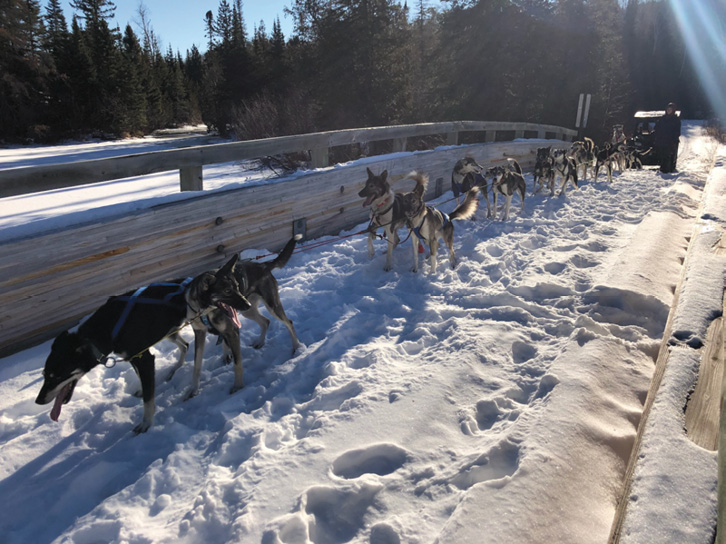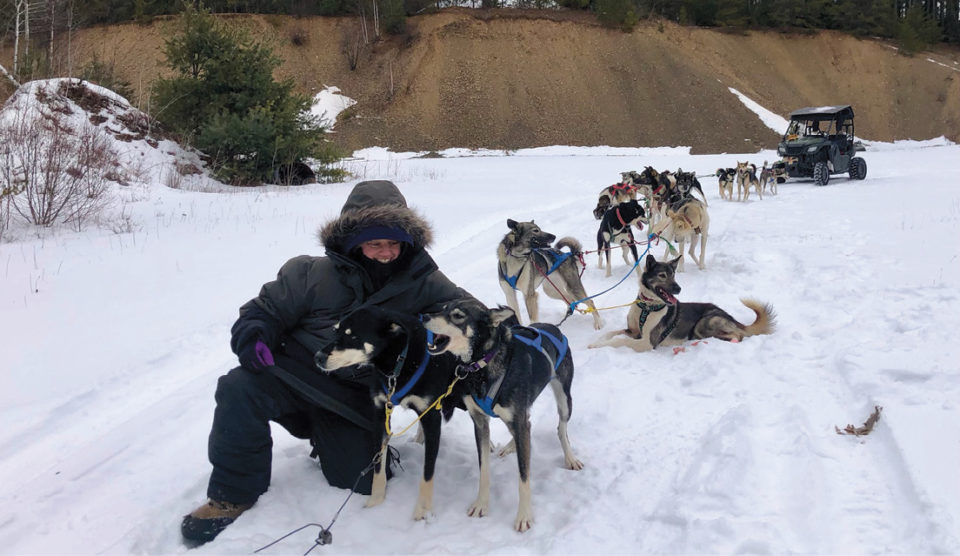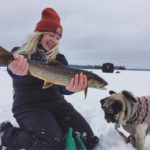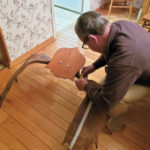I have maintained a log of our training miles since the fall of 2014. It’s an excel spreadsheet, with a tab for each month of training of each year. The fall of 2014 was the first fall Matt and I trained for the Beargrease marathon. One of us has run the marathon each year since 2015 except last year, when we took a break.
I raced the Beargrease in 2015 and 2016. Matt ran in 2017 and 2018. In 2019 I took another turn and I will again this year. We’ve had two fourth place finishes, one fifth and one sixth, and in 2018, Matt scratched. Every year we’ve run, I’ve always had the thought that perhaps if we put in more miles and more back-to-backs, we could have a better race. Somehow, come December, the best of intentions have been hard to put into action. Training a back-to-back involves preparation—chop snacks, load straw, load bowls and food. Be ready to go early. Have a route. Plan a meet-up spot with the support crew. It involves an entire day of training. Three to four hours of running, a two-to-three-hour rest followed by another run.
We do the back-to-back runs because it simulates the race experience. In the race, we do a 35-40-mile run, rest at a checkpoint for a couple hours and hit the trail again. The dogs learn from practice that when the straw bed goes down, it’s nap time. When it’s time to eat, eat. When it’s time to go, get up and go.
When yearlings go on their first back-to-back, it’s apparent they don’t know what to do. While the older seasoned dogs go to sleep, the yearlings stand there, waiting for something to happen. Sometimes they don’t nap at all.
This year, we closed out November with 550 miles on the race team. December is looking as strong as it ever has—only one year did we finish December with over 1,000 training miles.
But, we are still training with the ATV. There have been a few years that the snow has held off until mid-December. Notably in 2015, we were on the ATV until December 16 when we had a freezing rain event followed by a huge dump of snow that toppled trees and destroyed trails throughout the area. Finally, we could switch to sleds but there was nowhere to go until some serious trail maintenance could happen. One year we got on sleds in November but then it later rained. We drove smaller and smaller teams, refusing to go back to the ATV despite how icy the trails had become. Matt recalls shoveling snow on some exposed rocks and filling holes on the trail.

This year, I’ve held out for the real snow. I can train 16 dogs on the ATV. It’s more efficient. Nonetheless, I am feeling desperate for snow and sleds. The ATV is a cold, cold ride. If you see me out there, you’d think it to be 20 below. I dress in my biggest parka, three layers of pants and big fat boots. But generally the temps have been warmer than 20. Even at 30 degrees, you’ll find me rolling back into the yard after a two or three hour run, frozen to the steering wheel. I try to go out on a full belly—calories are the surest way to stay warm. Sometimes, if my friend Anna is training with me, we take turns running alongside the team, trying to restore circulation to our fingers and toes.
December equals training miles—miles getting to know each dog and its quirks and how each of them moves and at what speed. I can tell you who trots, who lopes, and who paces and how apparent any change from normal stands out. When I stop to fix something or give out snacks, I hear Sting screaming to go first and know that Pinto and Itsy are probably chewing their neck lines. I spend miles watching the frozen landscape, noting the days there is hoar frost or snow on the branches. Miles pass, hours go by, the sun sets and the moon rises. It is just one way to spend my days, rolling along behind these beasts, thinking about them and my job as a nurse and being a mother, and coronavirus and politics—things grandiose and things mundane. But mostly, more than anything else on these long cold runs, I think about food—French onion soup and hot chocolate and hot tea and hamburgers. Sometimes I wish I had an intravenous line directly to my stomach with warm soup of any kind that would warm my core.
At the end of our miles for the day, when we return to the yard, I return each dog to its spot, watch him roll on his back in satisfaction, and then lap up a good meal when it comes around. Most nights there is group howl before sleep. At night, I am at the races in my dreams.
The Beargrease marathon has 21 mushers signed up, all who are currently residing in the lower 48. This is more than I have seen in the seven years we have been running. There are 34 mushers in the 120-mile race and 20 in the Beargrease 40. I am looking forward to racing an entire slate of mushers I have never met, as well as those I call friends. With each mile, we close in on the starting line.




